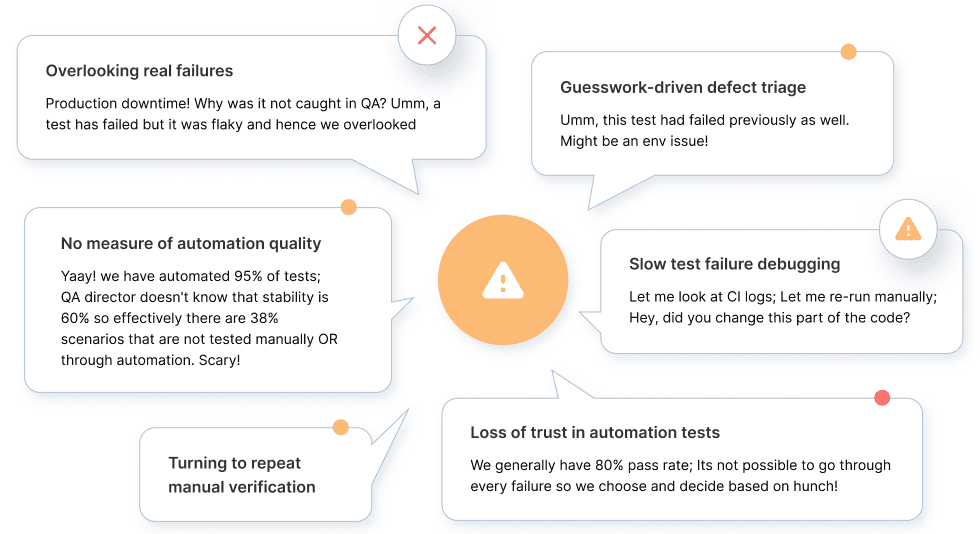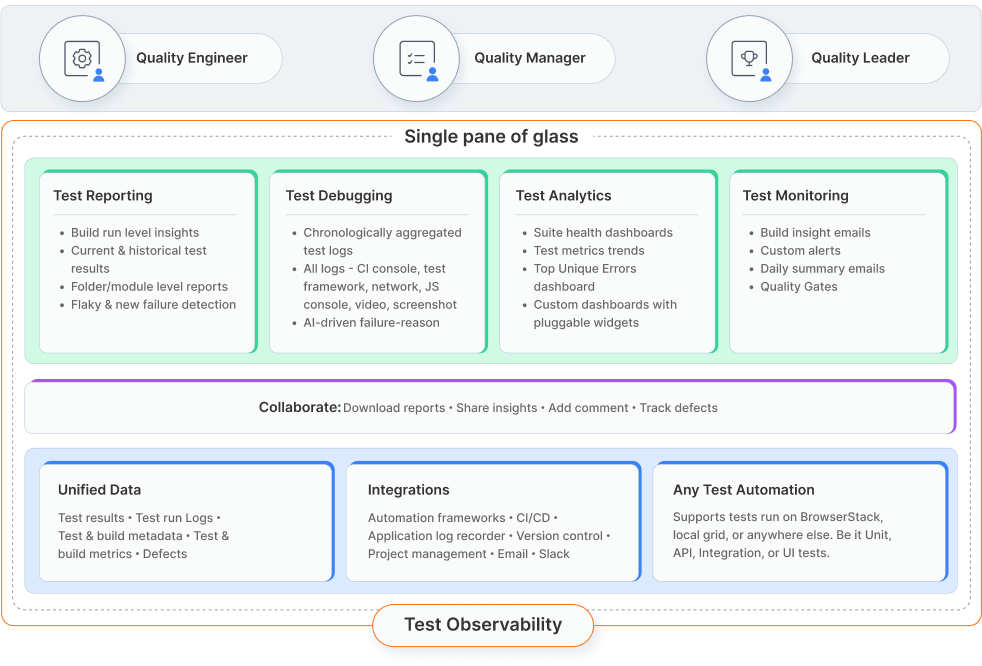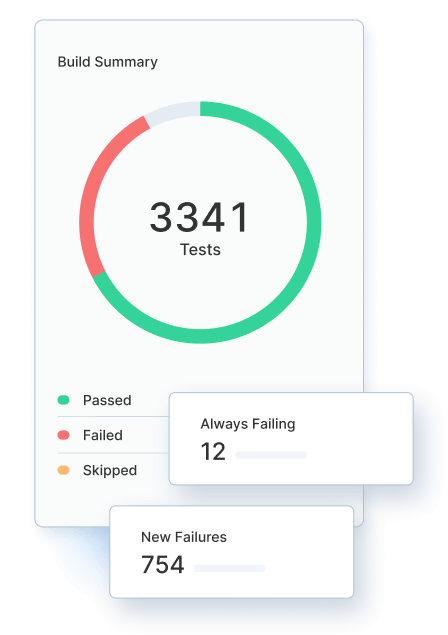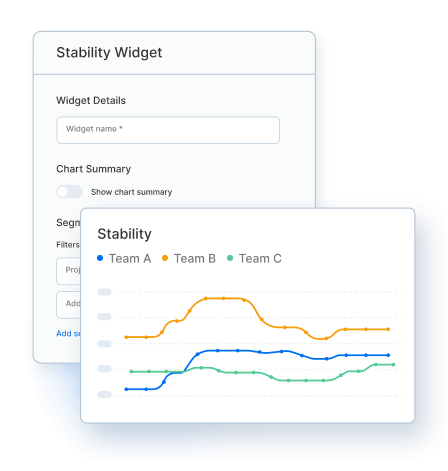Struggling with flakiness & test failures?
Want to improve automation stability?
Save up to 95% of your time on test result analysis and boost your confidence in test automation with improved stability using Test Reporting & Analytics!

Trusted by more than 50,000 customers globally
In our users' words…
Everyday problems faced by test automation teams


A fragmented testing stack makes it even more complex to track automation health


That’s why we built Test Reporting & Analytics
Test Reporting & Analytics unifies data from the entire tool stack to help drive root cause analysis at a blazing speed and derive actionable insights rooted in historical context.


How Test Reporting & Analytics can help you
Cut time to analyze test failures by up to 95%
Real-time test reporting
Analyze a test as soon as its execution is complete, no need to wait for job completion.Smart tagging
Failures auto-tagged as new failures or always failing to triage faster.Unique errors
Tests grouped by failure causes to quickly assess impact & prioritize.AI-driven failure bucketing
Auto-failure-reason categorization into product, environment or automation bugs.Timeline debugging
Chronologically aggregated test run logs for context-switch-free debugging.



Proactively ensure automation stability
Flaky detection
Default & custom rules to auto-detect flaky tests. No guesswork.Track automation stability
Ready-to-use charts and custom Slack/email alerts on metrics like stability, flakiness, etc.Mute tests
Exclude known-flaky tests from showing up in reports until fixed.Enable automation progress visibility across stakeholders
Custom dashboards
View test failures from every angle - ordered by failure rate, grouped by unique errors, segmented by failure reason or failure type.Testing trend charts
End-to-end visibility into growth of automation metrics such as unique test cases, flakiness, new failures, etc.Role-based access control
Control access across users with granular roles & permissions.

Are you willing to pay the cost of not using Test Reporting & Analytics?
Dev bandwidth wastage
Inefficient use of developer bandwidth due to testing bottlenecks.
Increasing flaky tests
Excessive number of flaky tests causing testing instability.
Inefficient QA automation tracking
Lack of visibility into QA automation health metrics.
No quality benchmarks
Unable to set quality benchmarks and alerts to improve automation health.
Misleading test failures
Failing tests that fail to reflect the true state of the application accurately.
Lack of historical data
No historical data available for analyzing past issues.
Try everything on Sandbox
No sign-up needed


